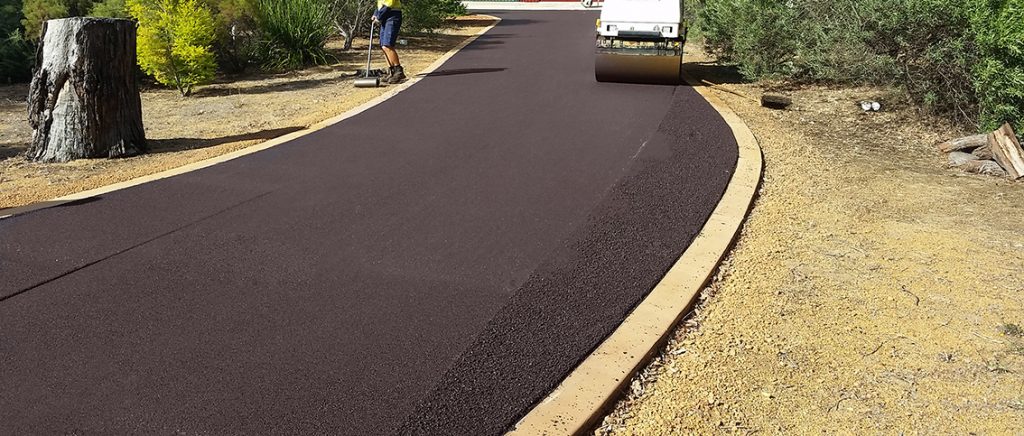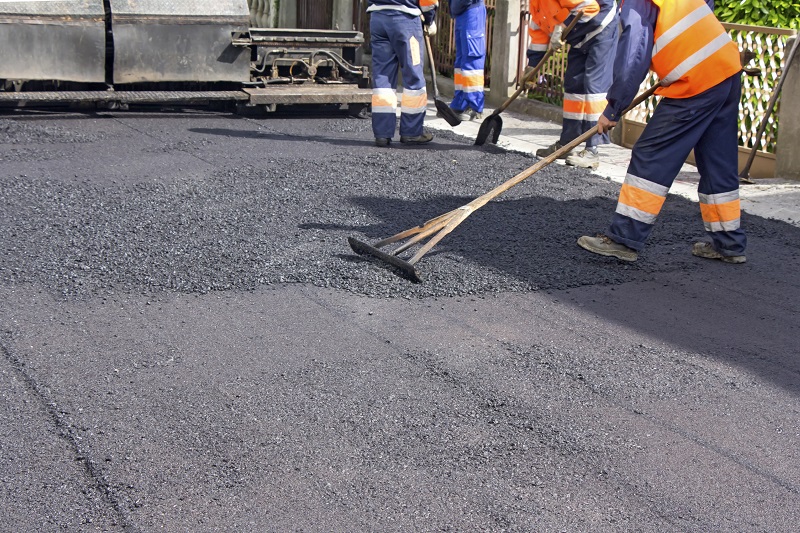Experience the Distinction: Hot Mix Asphalt Paving for Regrading Projects
Experience the Distinction: Hot Mix Asphalt Paving for Regrading Projects
Blog Article
Unlocking the Tricks of Hot Mix Asphalt Modern Technology
Discovering the midsts of hot mix asphalt modern technology discovers a world where careful procedures and specific formulations converge to form our roadways and framework. The combination of binders, fillers, and accumulations isn't simply a construction job however a calculated orchestration of sturdiness and efficiency.
Value of Hot Mix Asphalt
Hot Mix Asphalt plays an important function in modern-day framework advancement due to its sturdiness and cost-effectiveness. As the most generally made use of leading product for roadways, highways, and car parking great deals, Hot Mix Asphalt provides an array of benefits that contribute to its value in construction projects.
The toughness of Warm Mix Asphalt originates from its make-up, that includes aggregates, binder, and filler materials that are thoroughly chosen and mixed to meet specific performance requirements. This specific combination leads to a versatile and strong pavement that can sustain constant usage without considerable deterioration. Additionally, Hot Mix Asphalt is 100% recyclable, further enhancing its sustainability and ecological advantages. In general, the significance of Hot Mix Asphalt in framework advancement can not be underrated, as it proceeds to be a foundation of modern building and construction techniques.
Elements of Asphalt Mixes
The structure of asphalt blends includes meticulously chosen accumulations, binder, and filler materials that are critical for accomplishing specific performance needs. Aggregates are the main part of asphalt blends, offering toughness and stability. These accumulations can be natural, such as gravel or smashed rock, or synthetic, like recycled materials from old pavements. The binder, usually asphalt or asphalt cement, holds the accumulations with each other and offers adaptability and sturdiness to the mix. The option of the binder is essential as it straight influences the mix's efficiency in different weather condition problems. Fillers, such as hydrated lime or Portland concrete, are made use of to improve the mix's workability and aging resistance. Angled Parking.
The mix and percentage of these components play a significant function in figuring out the quality and performance of the asphalt mix. Engineers carefully develop the mix to satisfy particular demands, thinking about aspects like web traffic volume, environment conditions, and sidewalk life expectancy. Proper option and harmonizing of accumulations, binder, and fillers are necessary for developing sturdy, long-lasting asphalt pavements.
Mixing and Manufacturing Strategies

When the aggregates are chosen, the binder, commonly asphalt cement, is included in bind the products together. The binder's quality and quantity substantially influence the mix's resistance, versatility, and stamina to environmental elements. Furthermore, fillers like moisturized lime or Rose city cement may be incorporated to enhance specific characteristics of the asphalt mix, such as its workability or moisture resistance.
Throughout manufacturing, the accumulations and binder are heated up, generally between 250-325 ° F(121-163 ° C ), to help with mixing and make certain correct finish of the accumulations. The mixing procedure needs to be complete to accomplish official source a homogeneous mix that advertises the preferred efficiency attributes of the asphalt. Various techniques, such as set mixing or drum blending, are utilized to attain top notch and constant asphalt blends for building projects.
Variables Impacting Asphalt Performance
Variables influencing asphalt efficiency encompass a variety of variables that affect the resilience, long life, and general top quality of asphalt pavements. One key aspect is the quality of products used in the asphalt mix. The kind and source of accumulations, the binder quality, and the ingredients all play a significant function other in determining the efficiency of the asphalt sidewalk. The gradation of accumulations is crucial as it influences the mix's workability, stability, and resistance to rutting and fracturing.

Ecological conditions also affect asphalt performance. Temperature level variations, wetness infiltration, and web traffic loads can all affect the architectural stability of the sidewalk. Design considerations, such as sidewalk thickness and drain, are essential in making sure the long-term performance of the asphalt sidewalk. By carefully thinking about these factors, contractors and designers can optimize asphalt efficiency and boost the service life of pavements.
Sustainable Practices in Asphalt Modern Technology

WMA enables for the manufacturing and placement of asphalt blends at lower temperature levels contrasted to traditional hot-mix asphalt, resulting in decreased power intake and greenhouse gas discharges. The usage of porous asphalt blends can help reduce stormwater runoff issues by allowing water to infiltrate via the pavement and right into the ground, advertising all-natural water purification and learn this here now reenergize processes.
Final Thought
Finally, warm mix asphalt modern technology plays an essential role in contemporary facilities growth as a result of its resilience and cost-effectiveness. By meticulously stabilizing parts, employing proper mixing methods, and thinking about numerous variables, designers can develop high-quality asphalt mixes that endure heavy traffic loads and severe climate condition. Accepting sustainable practices, such as using warm-mix technologies and recycled products, better boosts the ecological kindness of asphalt innovation.
Mixing and production techniques in warm mix asphalt modern technology include the accurate mix and processing of aggregates, binder, and fillers to create a high-performance and sturdy asphalt mix.Aspects influencing asphalt performance incorporate a variety of variables that affect the resilience, longevity, and total high quality of asphalt pavements. Lasting methods in asphalt innovation encompass numerous efforts aimed at reducing the ecological impact of asphalt manufacturing and paving procedures. By incorporating redeemed asphalt pavement (RAP) and recycled asphalt shingles (RAS) right into new asphalt blends, the industry can considerably reduce the intake of raw materials and power, while also lowering garbage dump waste.
WMA permits for the production and positioning of asphalt mixes at reduced temperatures contrasted to conventional hot-mix asphalt, resulting in lowered energy usage and greenhouse gas exhausts.
Report this page